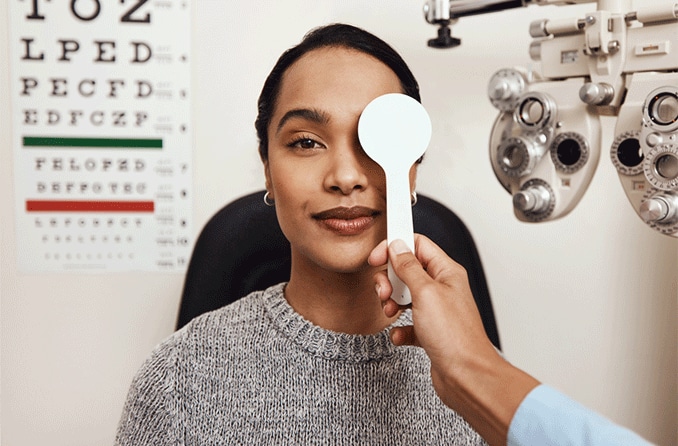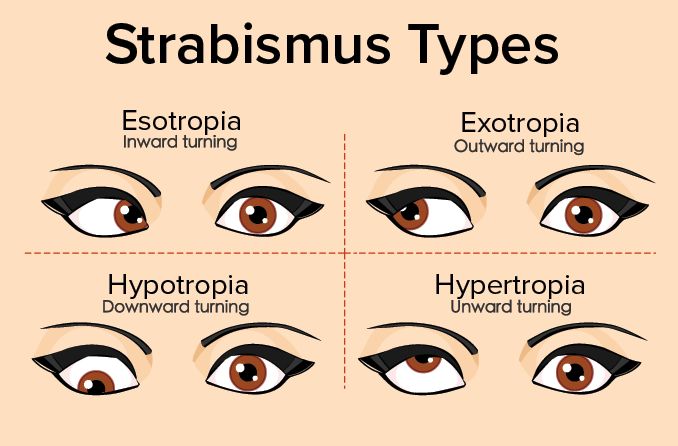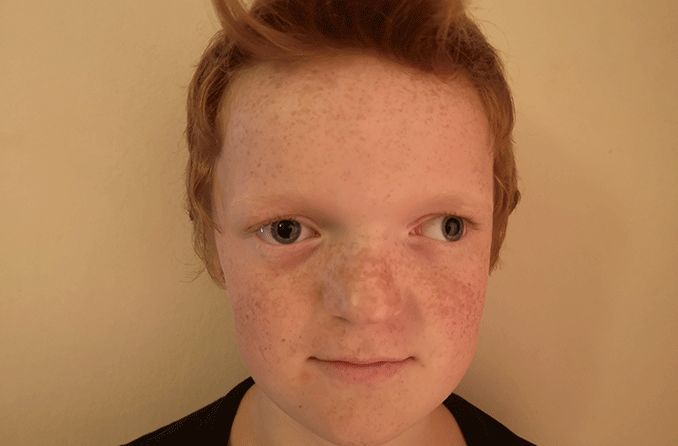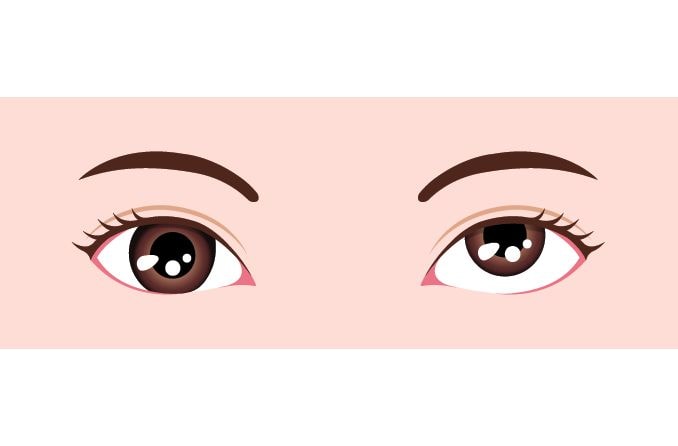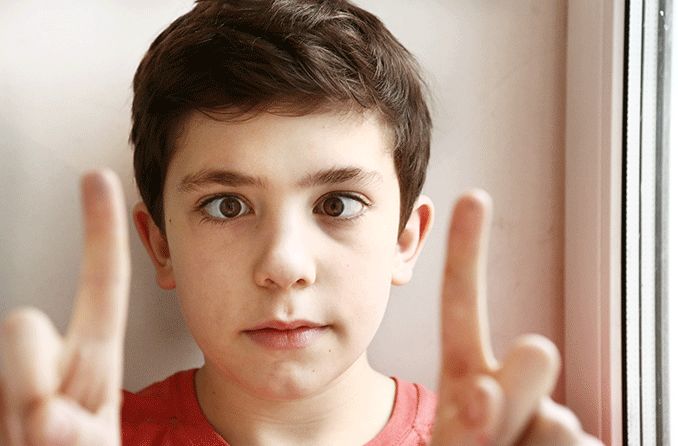The eyes work together as a team to provide one single image to the brain (called binocular vision), but some conditions can affect the way that the visual system works. One of those conditions is called exophoria.
Exophoria definition
Exophoria is an outward turn or deviation of the eye that only occurs some of the time. Exophoric eyes usually work together to see images clearly, but one eye may drift outward if binocular vision is disrupted and the eyes are not looking at the same object. The condition can be detected through a series of tests performed by an eye doctor. It’s treatable, though some cases may not require treatment.
What causes exophoria?
Like other eye coordination disorders, exophoria can be caused by factors such as weak eye muscles or underdeveloped eye coordination skills. In more rare cases, eye injuries and diseases can trigger a misalignment in the eyes. Since many cases of exophoria are related to eye muscle development, it’s important to monitor your child’s vision development so that any problems can be corrected early on. It is recommended that an infant has his or her first eye exam with a pediatric optometrist or pediatric ophthalmologist at 6 months of age.
SEE RELATED: A guide to children's vision problems
Exophoria vs. exotropia
“Phorias” and “tropias” of the eye describe conditions that are a result of misalignment in the eyes. With phorias, the misalignment is only obvious when the fusion between the eyes is broken. In tropias, the misalignment is always there.
Some other types of phorias and their tropia counterparts include:
Hyperphoria and hypertropia – Upward turn of the eyes
Hypophoria and hypotropia – Downward turn of the eyes
Exophoria is a condition that is only present in some scenarios, while exotropia is constant. Both conditions involve one eye drifting outward, away from the nose, and both are often present in childhood.
Tropias are members of the strabismus family, and because they are constantly present, they may cause more problems for vision than phorias.
In some cases, exophoria may progress to exotropia. If you notice misalignment of the eyes, it is recommended that you see an eye doctor.
Symptoms
Exophoria and similar eye misalignment conditions can produce the following symptoms:
Difficulty reading
Headaches
Eye strain
Children may indicate that they have an eye coordination problem even if they are unable to verbalize it. For example, a child might have trouble playing sports, reading or performing up-close tasks. They may also cover one eye to compensate for the problem.
Since exophoria does not present itself constantly, the symptoms may not be present at all times. If you experience, or notice your child experiencing, any of these symptoms, contact an eye care professional for an eye exam.
Diagnosis
Exophoria is diagnosed through a series of tests called “cover tests” that are performed by an eye doctor. This can include cover-uncover tests and cross cover tests (sometimes called alternate cover tests), both of which can help detect an eye misalignment problem. These tests involve covering each eye with a hand or small paddle to check for eye movements. Following these tests, an alternate prism test may be conducted to determine the degree of the misalignment.
Cover-uncover test
Cover-uncover tests help determine whether a “phoria” or “tropia” is present. A cover-uncover test involves covering one eye at a time, then lowering the hand or paddle so the eye is uncovered.
With exophoria (and other phorias), the uncovered eye remains looking straight ahead because it’s not a constant issue. The opposite occurs for tropias such as exotropia and esotropia; one eye drifts to a particular direction while the other is covered.
Alternate cover or cross cover test
Phorias, including exophoria, are often better identified through what is called an alternate cover test or cross cover test. During this assessment, the eyes are covered one at a time, but instead of the doctor lifting and removing their hand, they cover the eyes alternatingly. This process breaks the fusion between the eyes, which can reveal phoria-related eye movement.
In summary, if exophoria is present, one of the eyes will move inward just as it is uncovered (because it had turned out when it was covered). There will be no eye movement when the instrument covers and uncovers each eye individually (as is done in the cover-uncover test).
Alternate prism test
An alternate prism test is conducted if a deviation is detected. This test is similar to the alternate cover test, but it also includes a prism, which is placed in front of the deviated eye to help determine the degree of the eye misalignment.
The magnitude of the prism is adjusted until both eyes are properly aligned. The eye doctor will record the amount of prism needed to align the eyes. Prism may be added to the glasses prescription if needed.
Treatment
Exophoria can be treated with eyeglasses or contact lenses, and you may find that your symptoms ease if you wear corrective lenses for myopia (nearsightedness) or hyperopia (farsightedness).
Some cases may require treatment through special prisms built into eyeglass lenses. Prisms can help to align the image seen by the eyes for more severe cases of exophoria. Your eye doctor will be able to tell if you need prism correction.
Your eye doctor may also suggest vision therapy for exophoria to help improve focus and eye movement and relieve bothersome symptoms including eye fatigue and eye strain.
Exophoria vs. esophoria
Exophoria is similar to esophoria, as both conditions affect the coordination of the eyes. However, while exophoria is an outward drift of the eyes, esophoria is an inward deviation. Both conditions can be treated through the use of corrective lenses or vision therapy, though some cases don’t require treatment.
When to see an eye doctor
Exophoria can occur due to eye muscle development issues, so it is important for children to have regular eye exams to identify any developmental problems.
Regardless of age, you should see an eye doctor if you experience symptoms such as double vision, headaches, eye fatigue or any feelings of misalignment. Though these can indicate exophoria, they may also be signs of another eye condition that should be examined.
Be sure to schedule an annual comprehensive eye exam with your eye doctor to ensure your eye and vision health is well-maintained and to detect any issues that may arise as early as possible, whether due to the aging process, injury or various underlying conditions.
SEE RELATED: Eye exams for children: Why they're important
